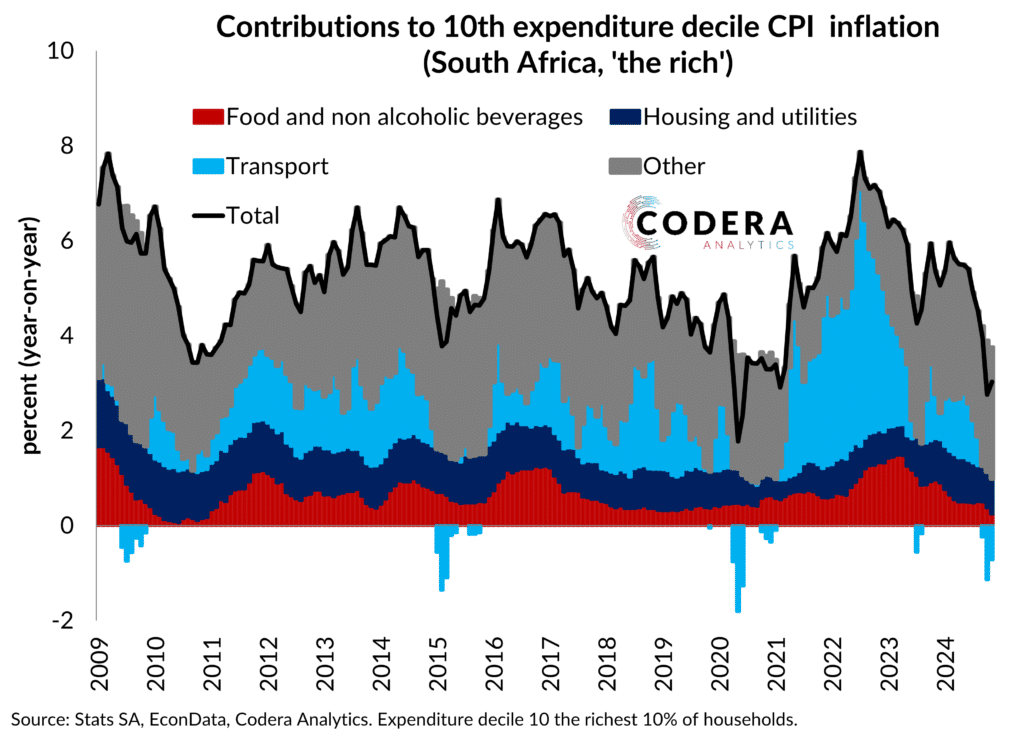Inflation rates differ across income groups because they consume distinct goods and services. Since the pandemic, low-income individuals (decile 1) have typically experienced higher inflation—about 2 percentage points more than the wealthiest group (decile 10). Today’s post shows that while food is the major contributor to the inflation experienced by South Africa’s poorest, rich people consume a more diverse set of goods and services, with housing and utilities playing a larger role in driving their inflation outcomes, on average.



